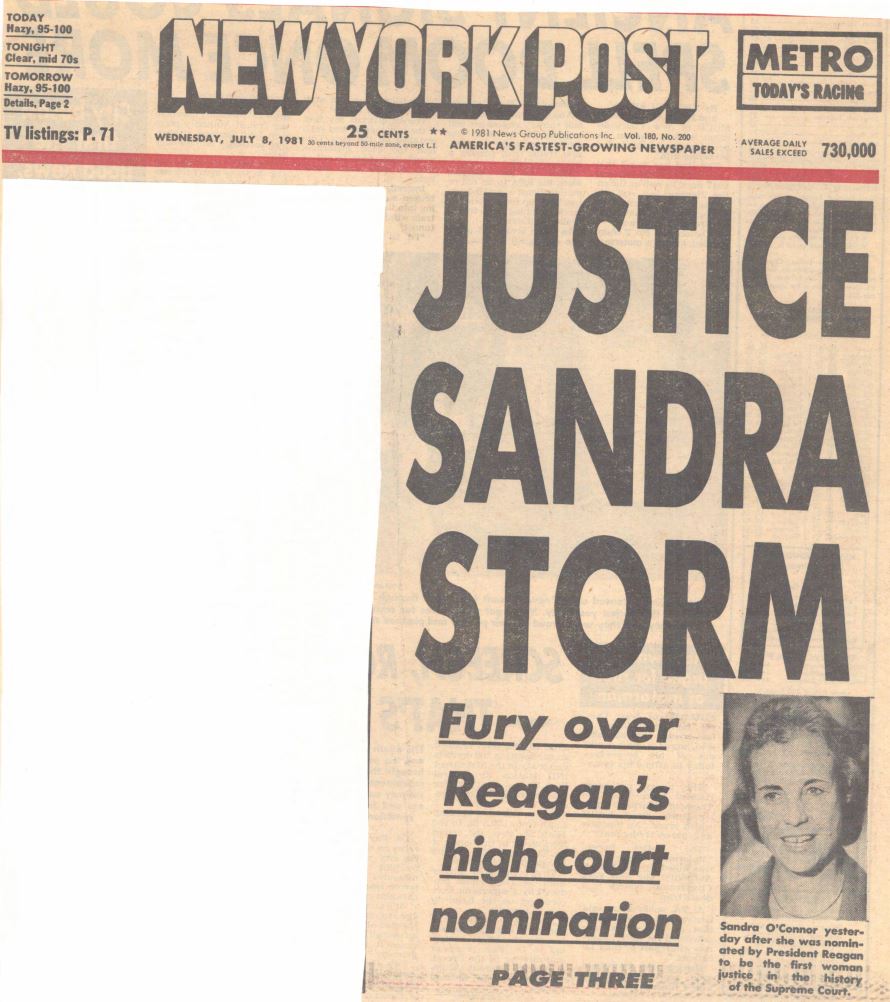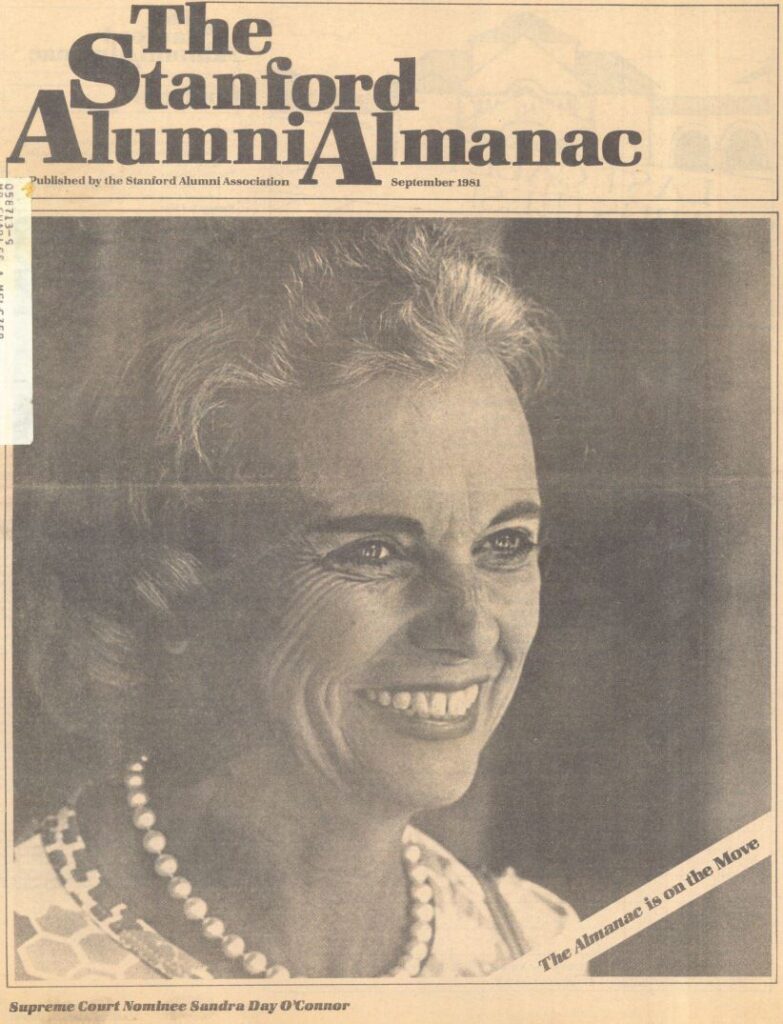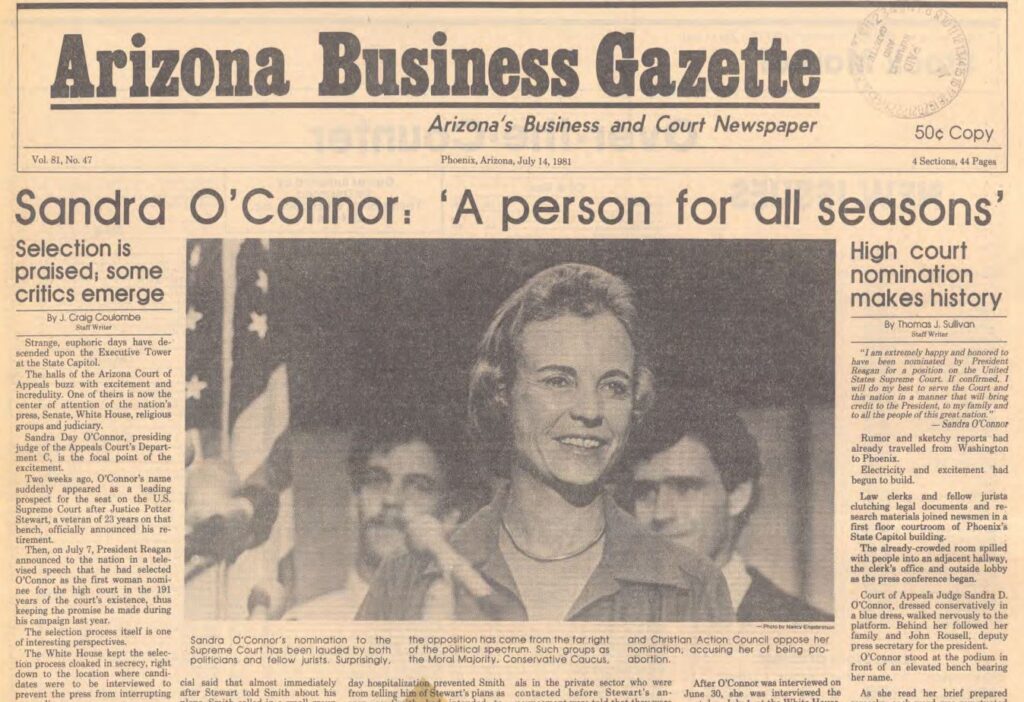SANDRA STORM! Right wing vows fight in bid to block high court nomination
WASHING TON – A furious storm of criticism exploded yesterday over President Reagan’s nomination of Arizona judge Sandra D. O’Connor as the first woman in history to serve on the Supreme Court. Outraged conservatives said they would move to block her confi1matio n because of her pa.c;t record of supporting abortio n and the Equal Rights Am , , 1ent. Conserv .,.t1 e groups, including the Rev. Jerry Fal- well’s Moral Majority and the Right-to-Life movement, flooded the White House with more than 5000 telegrams and phone calls protesting the state Appeals Court judge’s nomination. “This is going to be one tough fight,” Richard Viguerie, who runs one of the most sophisticated political direct-mail operations in the nation backing conservative causes, told The Post.
“We’ve been insulted and we’ve been betrayed and I’d rather take a physical beating than fight the President. But this is what we’re going to have to do,” said Viguerie, who has raised tens of millions of dollars.
“President Reagan’s nomination is a mistake. Either the President did not have sufficient information about her background in the area of social issues or chose to ignore that information,” Falwell said.
“Her record indicates she is not an opponent of abortion on demand and is opposed to attempts to curb this biological holocaust which has taken the lives of more than 10 million innocent babies since 1973.”
Reagan named O’Connor yesterday to fill the Supreme Court seat being vacated by retired Justice Potter




